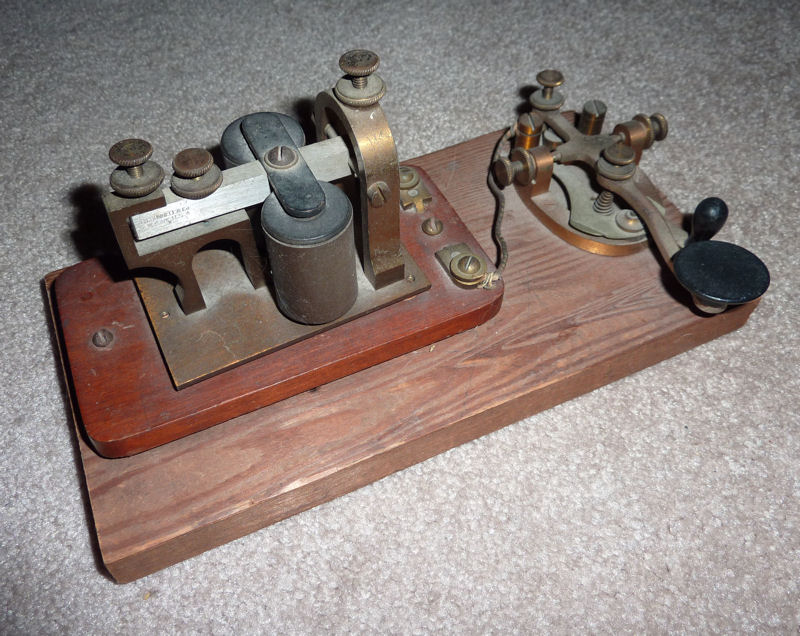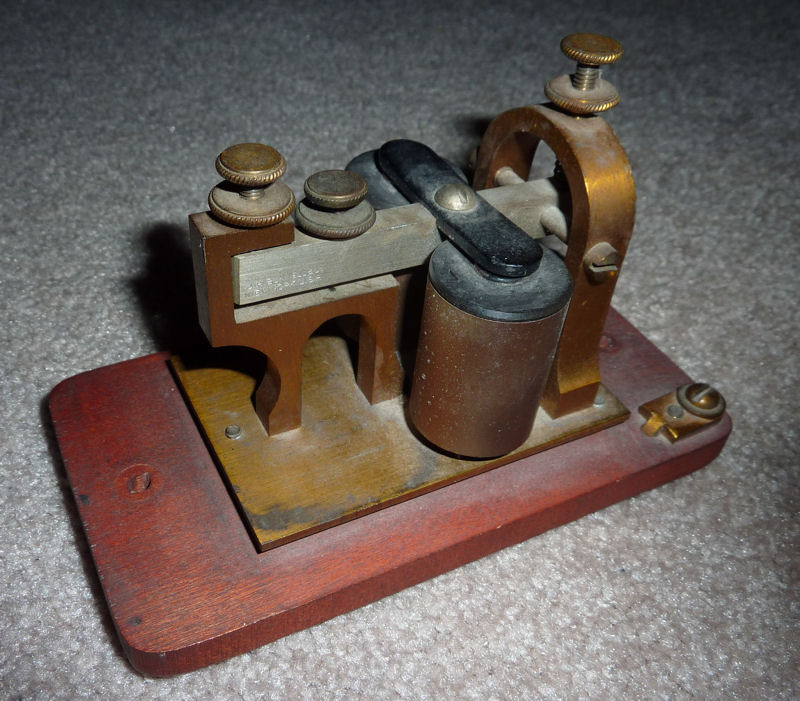Telegraphy was the dominant form of railway communications in Canada as early as the 1870’s. Where one can find railway tracks, old telegraph poles and wires can sometimes still be found as well. The wires were originally used to carry messages sent from telegraph keys, which were used to produce the “dots” and “dashes” used in Morse Code to send the characters in a message to others on the network. Another device called a sounder turned the electrical signals sent from a telegraph key into an audible sound to allow the telegraph operator to hear the dots and dashes and write down the message. The telegraph was commonly operated by a station agent; an employee who worked (and sometimes lived) in virtually every railway station in the country during the steam era. Using their telegraph key, a station agent could notify other agents in either direction if a train was late, early, or if an incident had occurred. This, combined with an up-to-date employee timetable, and a clock set as accurately as possible would have been all the agent had to ensure a collision did not occur. Telegraphs were also located in interlocking towers like Cabin D for the same purpose.
In 2010, Dave Best donated a telegraph key and sounder to the TRHA:
Telegraphs were gradually phased out with the invention of the telephone, and the infrastructure used to carry telegraph communications have similarly been removed with the adoption of Centralized Traffic Control.



